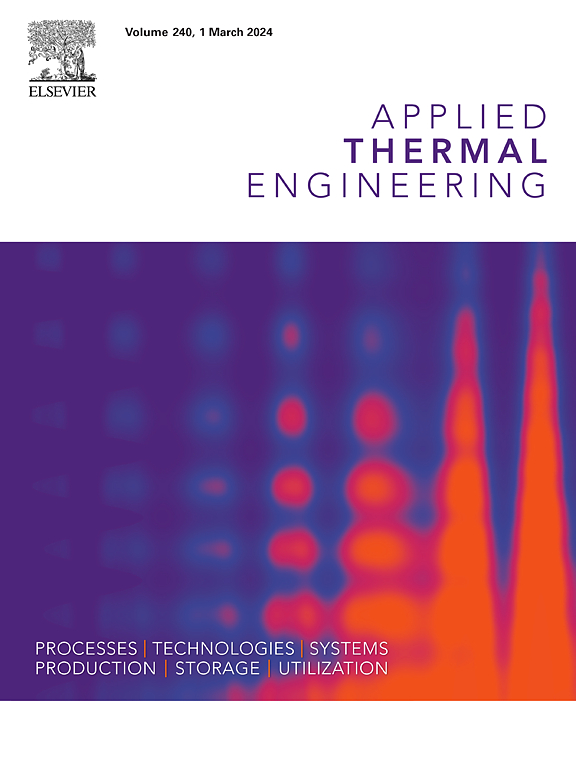A novel room temperature flexible composite phase change material based on thermoplastic polyamide elastomer and its thermal properties analysis
IF 6.1
2区 工程技术
Q2 ENERGY & FUELS
引用次数: 0
Abstract
Phase change material (PCM) has the characteristics of high latent heat, wide temperature range, and good thermal stability, which makes phase change cooling an excellent passive cooling technology, and it is worth exploring in the field of battery thermal management. However, common phase change materials have low thermal conductivity, high rigidity, and easy leakage of PCM at room temperature, which greatly limits their application. In order to solve the above problems, a new flexible composite phase change material (FCPCM) was prepared by physical melting and mixing methods, using paraffin wax (PA) as the phase change substrate, polyamide thermoplastic elastomer (TPAE) as the flexible support material, hexagonal boron nature (h-BN) as the first thermal conductivity additive, and expanded graphite (EG) as the second thermal conductivity additive. The shape stability, microscopic morphology, chemical characteristics, thermal properties, flexibility characteristics, thermal shape memory characteristics, and thermal cycle stability of FCPCM were further characterized. The results show that TPAE can not only prevent the leakage of PA but also give FCPCM heat-induced flexibility so that the composite phase change material has flexible properties at room temperature. Compared with a single thermal conductivity agent, the mixed thermal conductivity of h-BN and EG can greatly improve the thermal conductivity of FCPCM. When the thermal conductivity additive content is 15 % (h-BN = 7.5 %, EG = 7.5 %), the thermal conductivity of FCPCM is 0.51 W/mK, and the thermal conductivity is 255 % of pure PA. Finally, the performance of FCPCM with different heat transfer agent content was optimized, and the selected FCPCM samples were applied in single-cell thermal management. The results show that when the battery discharge rate is 2C, 3C, and 4C, the maximum temperature of the battery is reduced by 6.09 ℃, 6.99 ℃, and 7.56 ℃, respectively, compared with pure PA.
求助全文
约1分钟内获得全文
求助全文
来源期刊

Applied Thermal Engineering
工程技术-工程:机械
CiteScore
11.30
自引率
15.60%
发文量
1474
审稿时长
57 days
期刊介绍:
Applied Thermal Engineering disseminates novel research related to the design, development and demonstration of components, devices, equipment, technologies and systems involving thermal processes for the production, storage, utilization and conservation of energy, with a focus on engineering application.
The journal publishes high-quality and high-impact Original Research Articles, Review Articles, Short Communications and Letters to the Editor on cutting-edge innovations in research, and recent advances or issues of interest to the thermal engineering community.
 求助内容:
求助内容: 应助结果提醒方式:
应助结果提醒方式:


